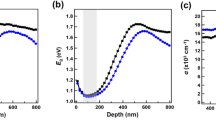Abstract.
We present an experimental investigation of the photorefractive properties of rhodium-doped barium calcium titanate (BCT) crystals of the congruent melting composition Ba0.77Ca0.23TiO3. Considering the results previously obtained on this crystal in the visible region, it should be a good alternative to BaTiO3. Nevertheless, many applications use infrared light. Therefore we present here a study of rhodium-doped BCT crystals at 850 nm. This wavelength is of special interest as it is in the spectral range of laser diodes. Rhodium doping is expected to enhance the sensitivity of the crystal in the infrared as is the case for BaTiO3.
We first noticed that BCT:Rh crystals are sensitive at this wavelength as expected. Furthermore, the photorefractive properties are interesting in terms of photorefractive gain, with a gain as high as 3 cm-1 with ordinary polarization. This study has also put forward the fact that rhodium is not the only defect that participates in the photorefractive effect. Indeed, a large quantity of iron seems to be present in the BCT crystals and to participate in the photorefractive effect.
Similar content being viewed by others
Author information
Authors and Affiliations
Additional information
An Erratum to this article can be found at
Rights and permissions
About this article
Cite this article
Bernhardt, S., Veenhuis, H., Delaye, P. et al. Effect of rhodium doping on the photorefractive properties of BCT crystals at 850 nm . Appl Phys B 72, 667–675 (2001). https://doi.org/10.1007/s003400100574
Received:
Published:
Issue Date:
DOI: https://doi.org/10.1007/s003400100574




